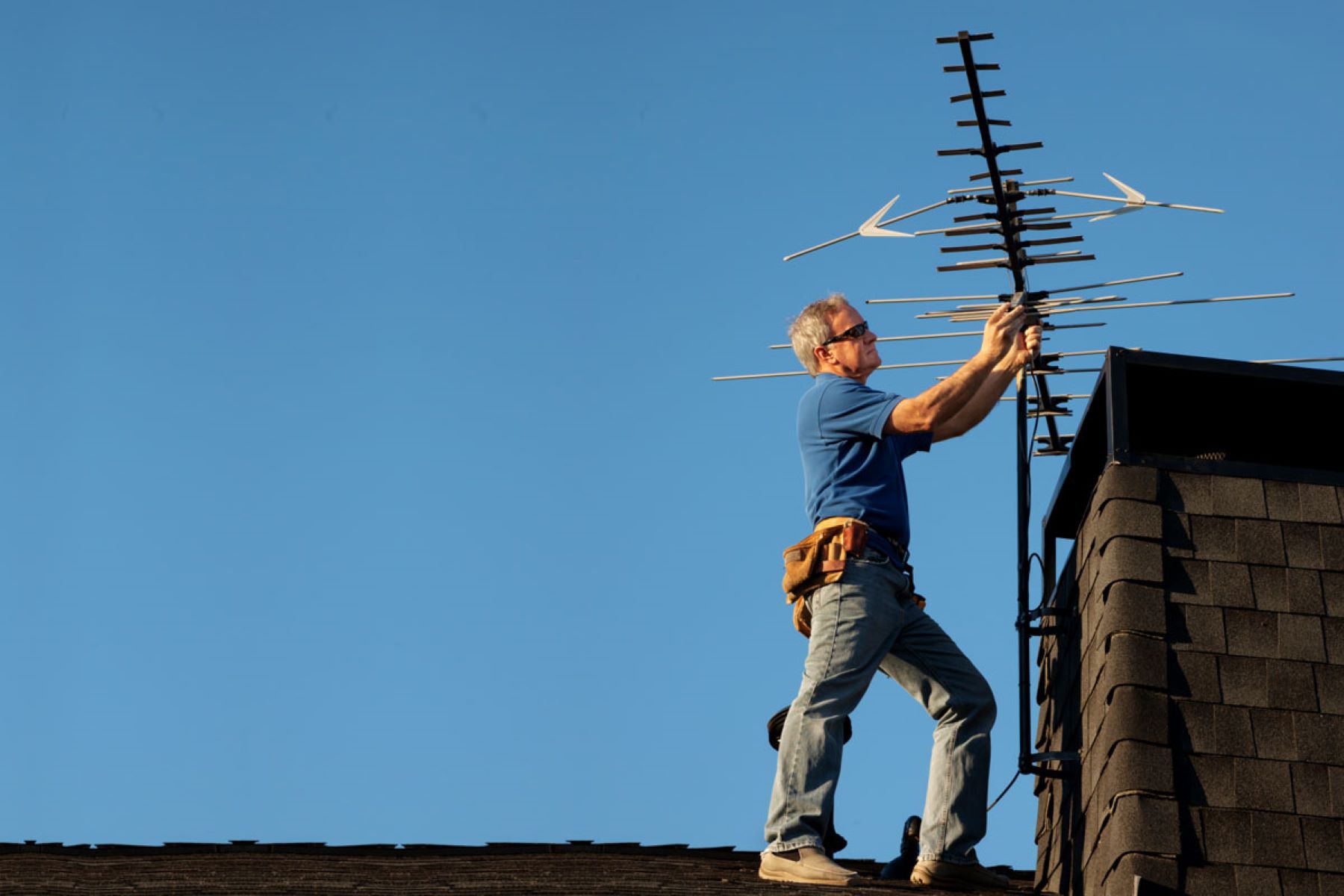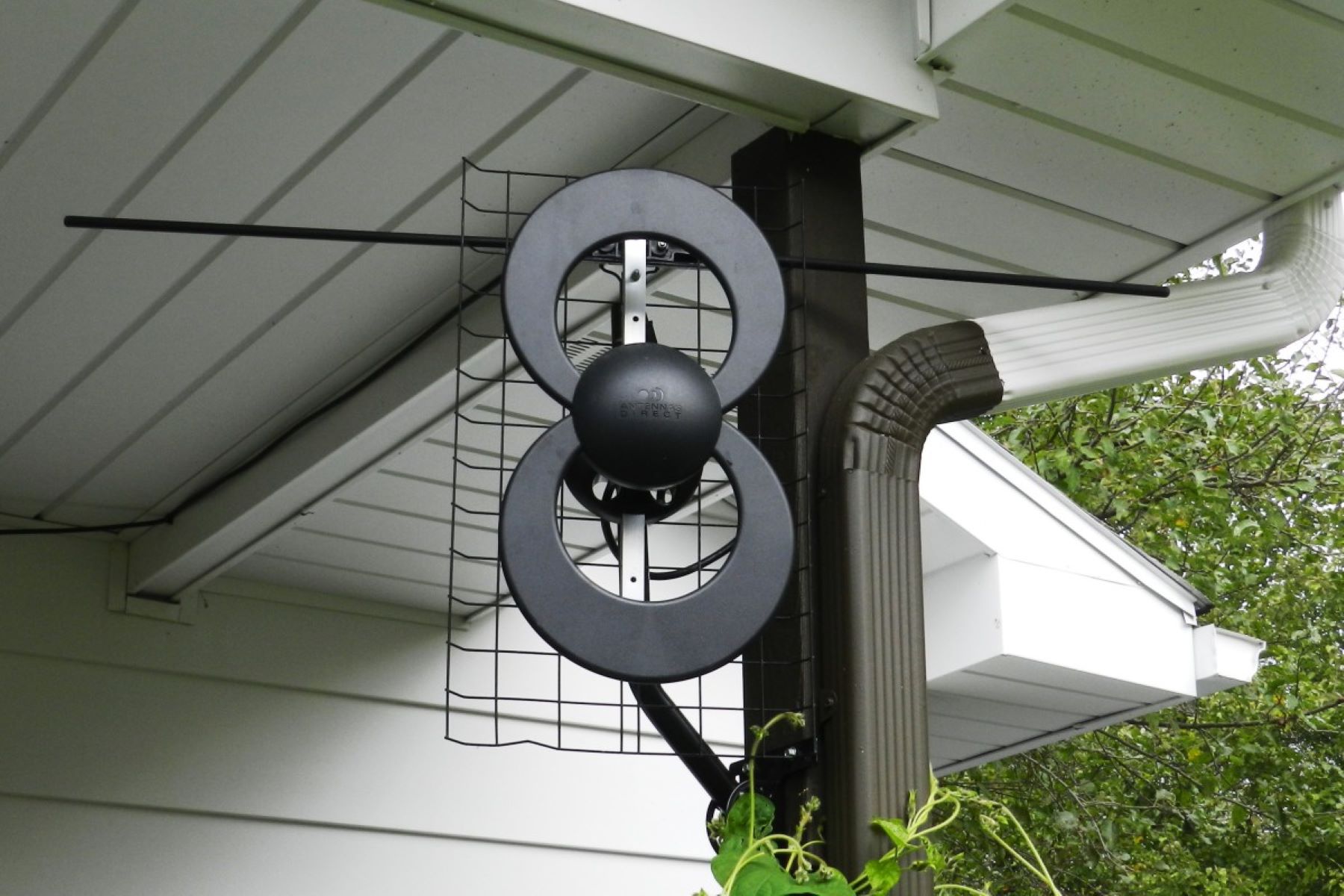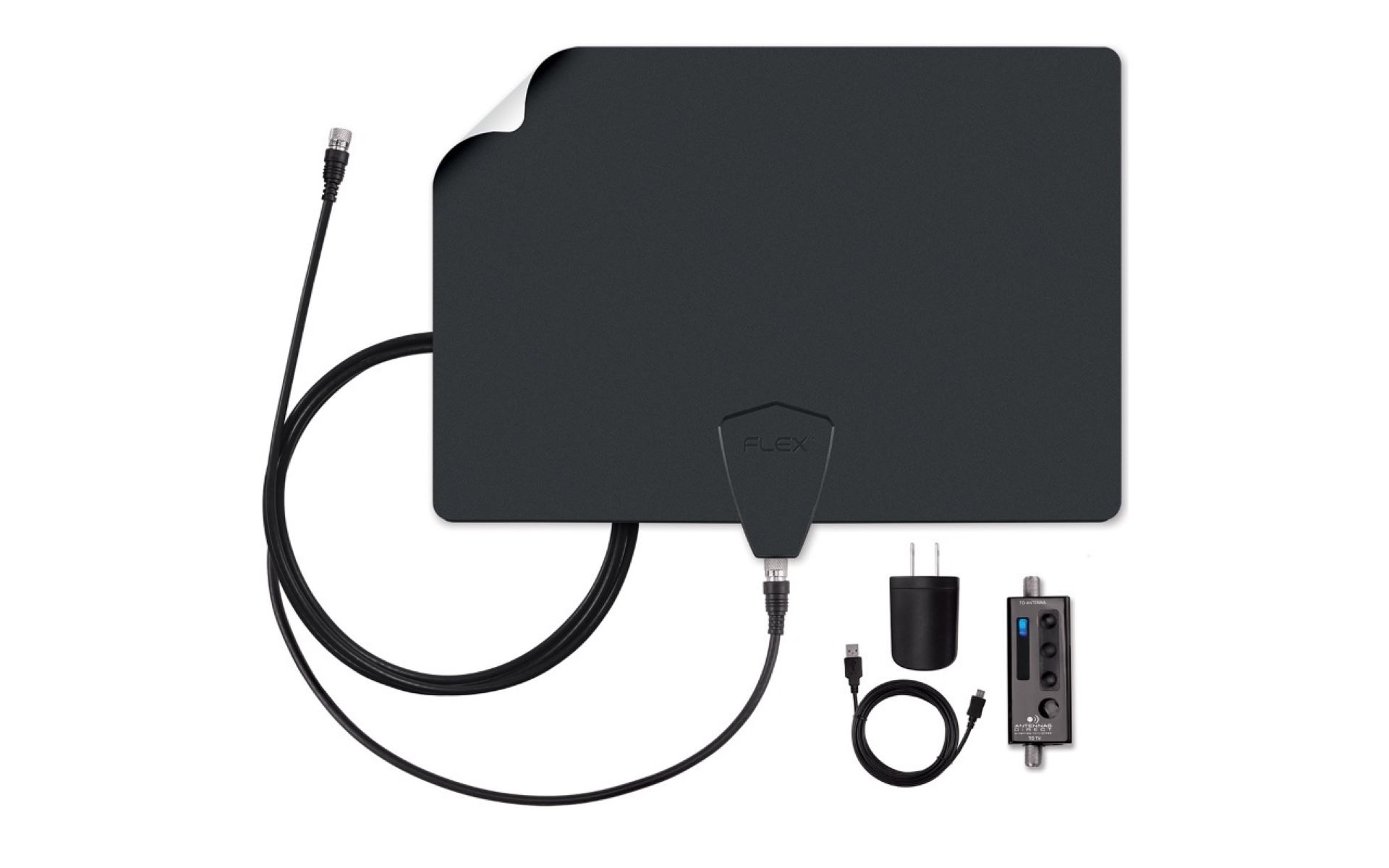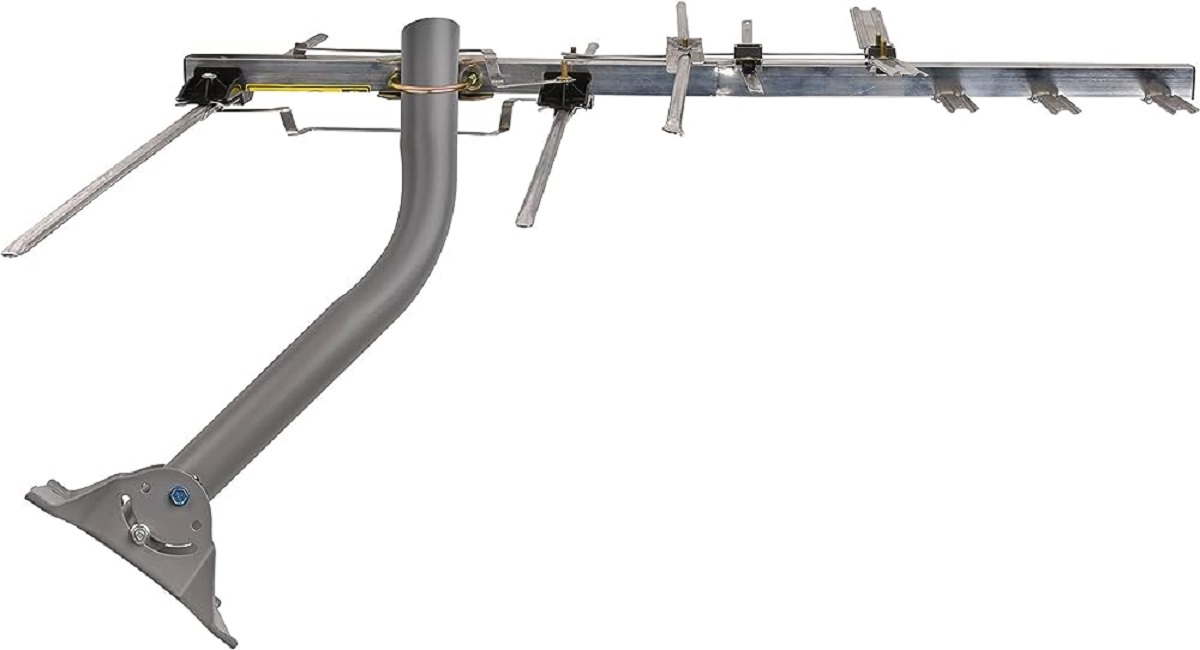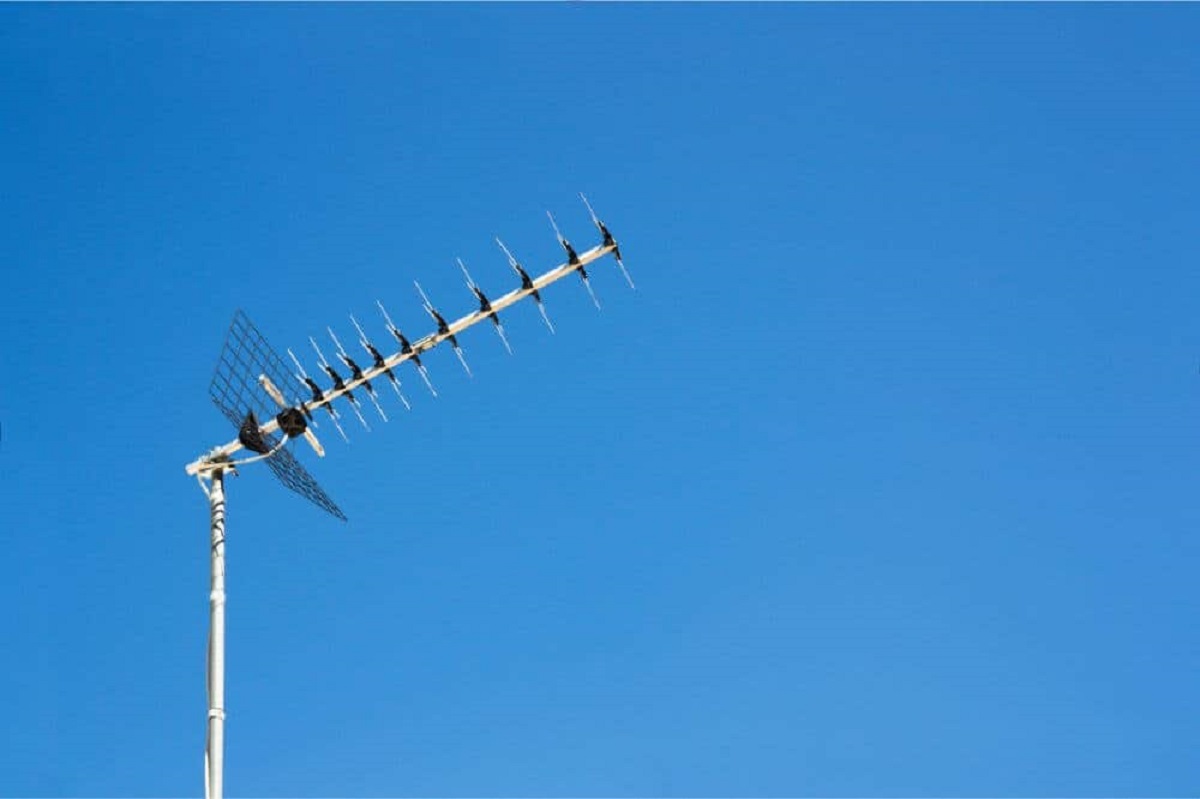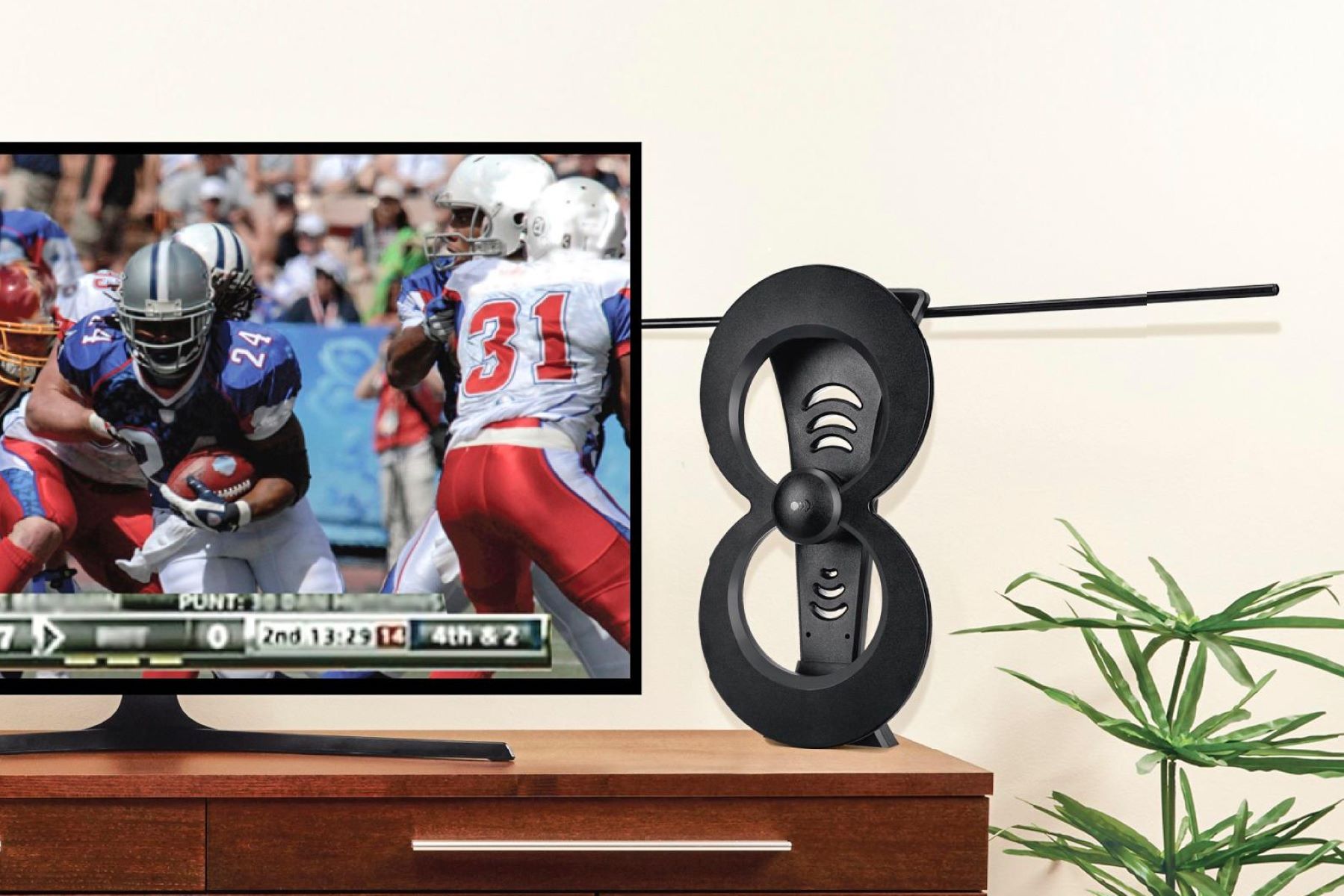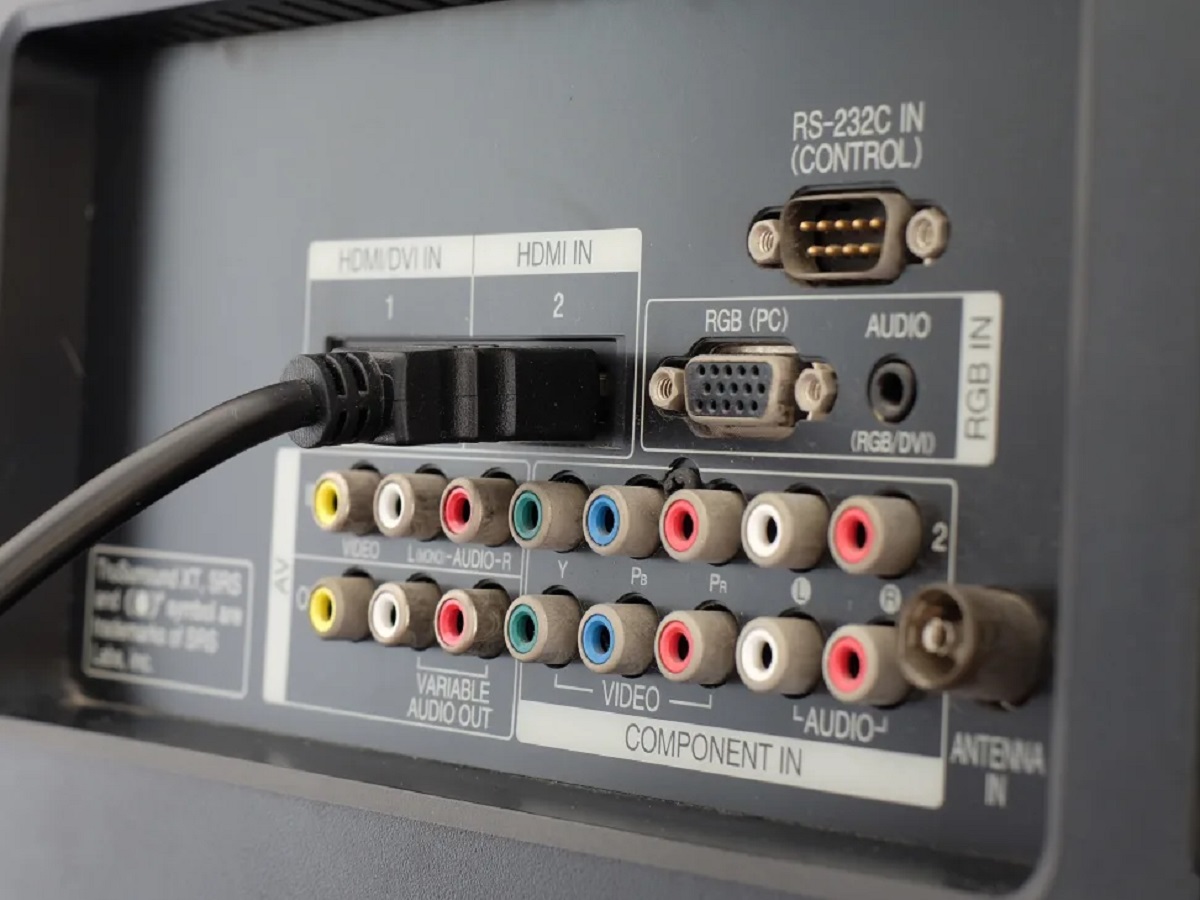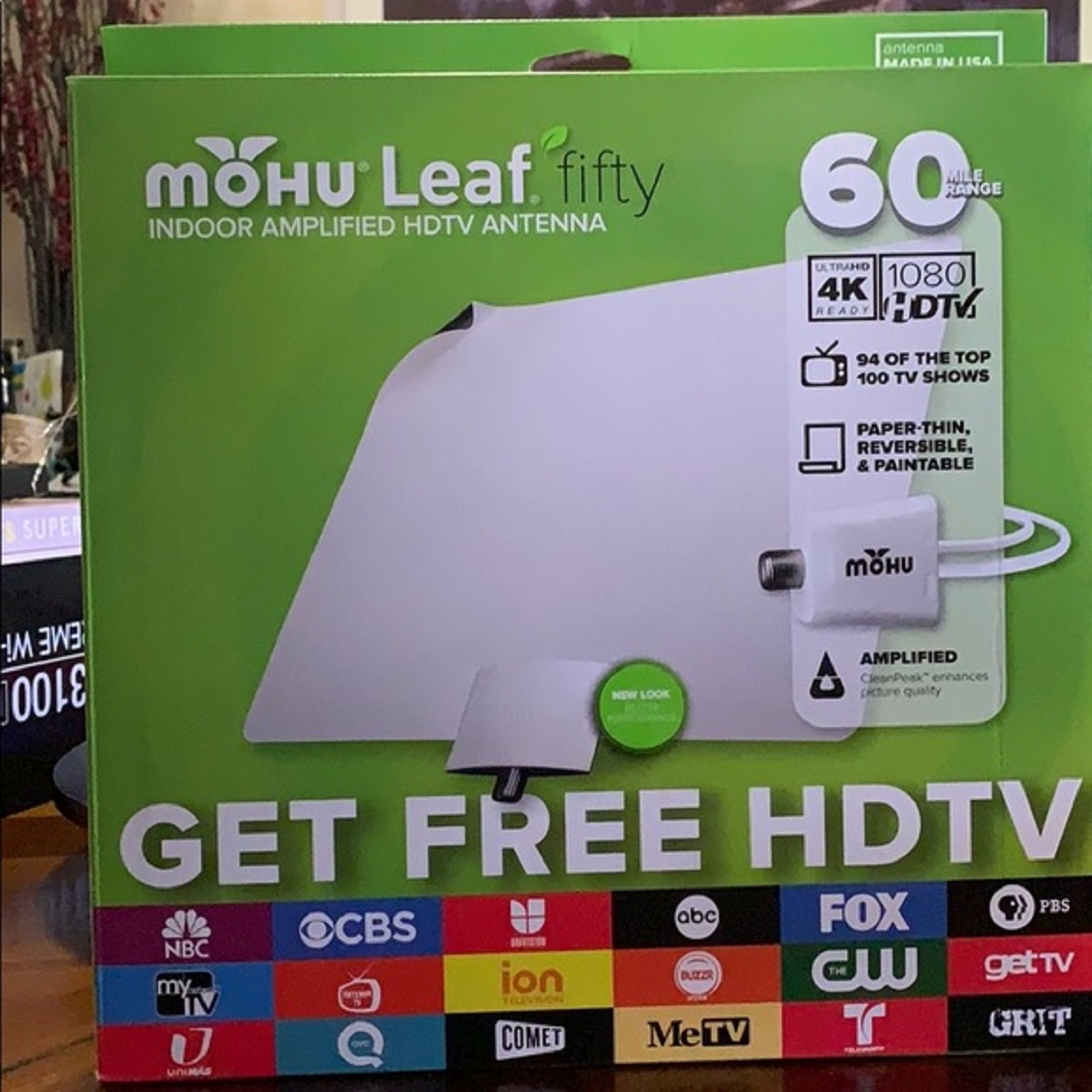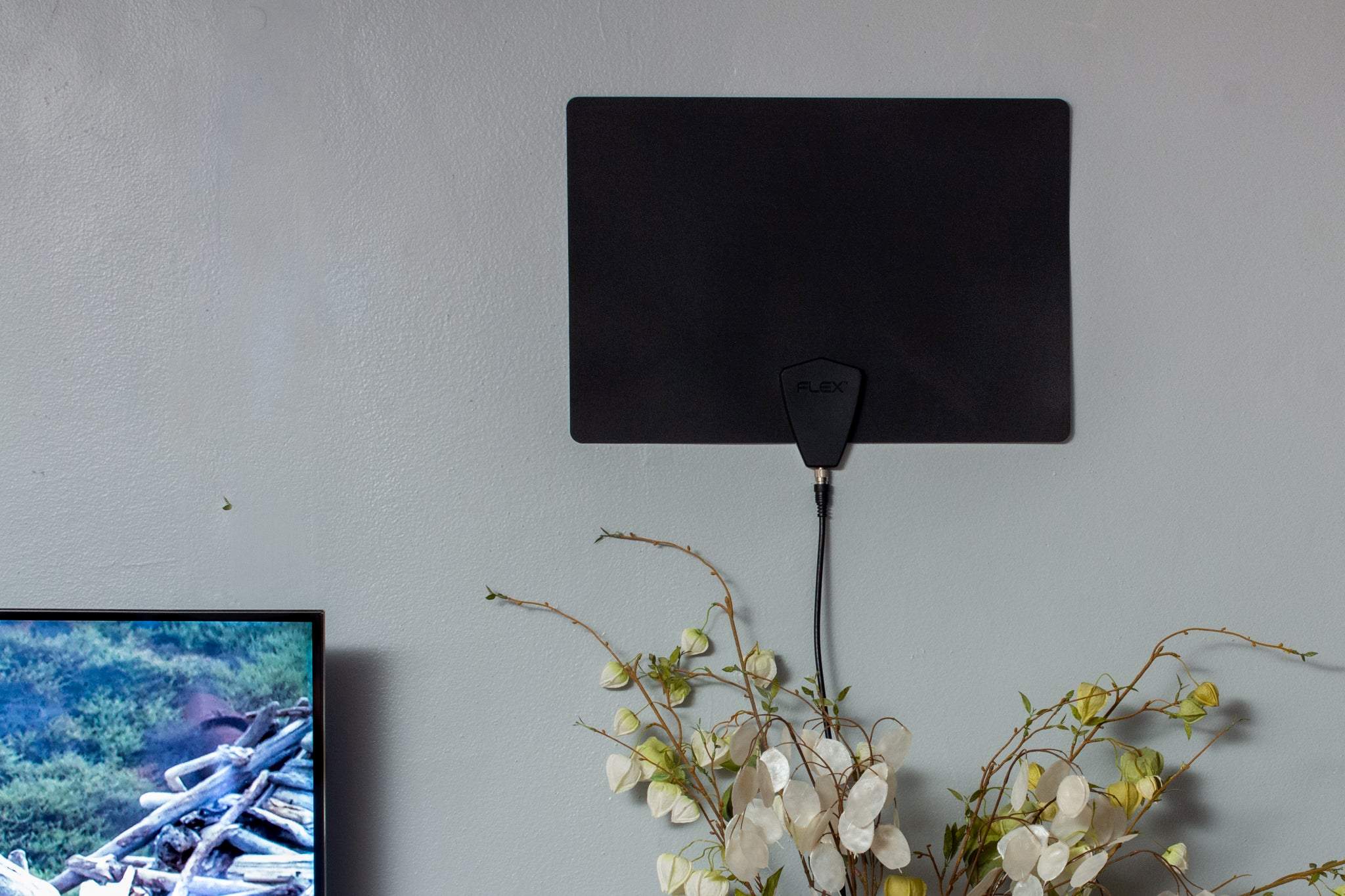Introduction
Welcome to the world of free broadcast television! With the rise of streaming services and cable subscriptions, it’s easy to overlook the power and convenience of a good old-fashioned TV antenna. Whether you’re looking to cut the cord or simply want to expand your viewing options, optimizing your TV antenna can significantly improve the quality and range of the channels you receive.
While modern television sets come equipped with advanced tuners, they are only as good as the antenna you connect to them. No matter how fancy your TV may be, if your antenna isn’t up to par, you’ll be left with pixelated images, freezing signals, and frustrating channel blackouts. That’s where the art of optimizing your TV antenna comes into play.
In this article, we’ll guide you through the essential steps to make your TV antenna work better. By understanding the factors influencing reception, proper antenna placement, improving signal strength, and eliminating interference, you’ll be well on your way to enjoying crystal-clear, uninterrupted television with more channels than you thought possible.
Before we dive into the technical details, it’s important to note that the effectiveness of your TV antenna largely depends on where you live. Factors such as the proximity to TV towers, local geography, and surrounding buildings can greatly affect the reception. However, by following the tips and techniques outlined in this guide, you’ll be able to maximize your TV antenna’s potential and enhance your overall viewing experience.
So, whether you’re a cord-cutter, a casual viewer, or someone who wants to have a backup option for entertainment, read on to discover how to make the most out of your TV antenna.
Understanding TV Antennas
Before diving into the intricacies of optimizing your TV antenna, it’s essential to understand how antennas work. A TV antenna serves as a receptor or collector of radiofrequency signals that are transmitted by local TV stations. These signals carry audio and video information, allowing you to tune into different channels and enjoy your favorite shows.
TV antennas come in various types, each designed to capture specific frequencies and signals. The most common types of TV antennas include indoor antennas, outdoor antennas, and attic antennas. Indoor antennas are compact and easy to install, making them a popular choice for urban dwellers. Outdoor antennas, on the other hand, are larger and offer better reception, ideal for those living in suburban or rural areas. Attic antennas strike a balance between indoor and outdoor options, providing an inconspicuous installation with improved reception.
It’s important to consider factors such as distance from TV towers, surrounding obstacles, and signal strength when choosing the right TV antenna for your location. Additionally, check if the antenna is compatible with your TV tuner or if you need a separate converter box.
While newer antennas may come with built-in amplifiers to boost the signal strength, not all locations require this feature. In some cases, amplifiers can actually cause more harm than good by amplifying unwanted noise and interference. Understanding the specific requirements of your viewing area will help you make an informed decision when selecting a TV antenna.
Remember, television signals are transmitted over the airwaves, and factors like weather conditions and geographical barriers can affect the quality of the reception. However, by understanding the fundamentals of TV antennas and how they work, you can better optimize your setup to make the most of the signals available in your area.
Factors Affecting Reception
When it comes to optimizing your TV antenna, it’s crucial to take into account the various factors that can impact signal reception. By understanding these factors, you can make informed decisions and adjustments to improve the quality and range of the channels you receive.
1. Distance from TV Towers: The distance between your location and the TV broadcasting towers plays a significant role in signal strength. The farther you are from the towers, the weaker the signal will be. This can result in pixelation, freezing, or complete loss of certain channels. To improve reception, consider placing your antenna as high as possible and point it towards the nearest tower.
2. Obstacles and Interference: Buildings, mountains, trees, and other physical barriers can obstruct the TV signal. The signal can also be affected by electromagnetic interference from other devices such as Wi-Fi routers, cordless phones, or microwave ovens. To minimize these obstacles, position your antenna in a clear line of sight to the broadcasting towers, away from other electronics that may cause interference.
3. Signal Strength: Different TV stations broadcast their signals at varying strengths. Some stations may have stronger signals, allowing for better reception, while others may be weaker and more susceptible to interference. Understanding the signal strength of the channels you want to receive can help you adjust your antenna or consider employing signal boosters or amplifiers.
4. Weather Conditions: Severe weather conditions like rain, snow, or thunderstorms can temporarily disrupt TV signals. While you can not control the weather, it’s important to be aware that weather conditions can affect signal quality.
5. Antenna Quality: Not all TV antennas are created equal. The quality and design of your antenna can significantly impact reception. Investing in a high-quality antenna that is designed for your specific location can greatly improve signal strength and overall performance.
By considering these factors and making necessary adjustments, you can enhance your TV antenna’s reception capabilities and enjoy a wider range of channels with improved clarity and stability.
Placement of Your Antenna
Proper placement of your TV antenna is crucial to maximize signal reception. The ideal location depends on your specific circumstances and the factors affecting signal strength in your area. Here are some guidelines to help you find the best placement for your antenna:
1. Consider Height: In general, the higher the antenna is placed, the better the reception. If you have an outdoor antenna, try mounting it on the roof or in an elevated position. For indoor antennas, placing them near a window or on a higher shelf can improve signal reception.
2. Find the Right Angle: Point your antenna towards the broadcasting towers. To determine the direction of the towers, you can use online tools or smartphone apps that provide information about nearby TV stations and their transmission towers. Adjust the angle of your antenna to align it with the towers for optimal signal reception.
3. Avoid Obstructions: Ensure that your antenna has a clear line of sight to the broadcasting towers. Avoid placing it near tall buildings, trees, or other obstructions that can interfere with the signal path. Even indoor antennas can be impacted by nearby obstacles, so consider repositioning them if needed.
4. Experiment with Placement: If you’re having trouble with reception in a certain location, don’t be afraid to experiment with different spots. Try moving the antenna around the room or repositioning it outside. Sometimes even small adjustments can make a big difference in signal strength and channel availability.
5. Consider Signal Reflection: In some cases, signal reflection can enhance reception. Experiment with positioning your antenna near reflective surfaces like walls or metal objects. This can help capture and amplify reflected signals, leading to improved reception.
Remember, finding the ideal placement for your antenna may require some trial and error. Don’t get discouraged if you don’t achieve optimal results right away. Take the time to test different positions and angles to find the sweet spot that delivers the best signal quality and range for your specific location.
Adjusting the Antenna Direction
Once you have placed your TV antenna in an appropriate location, the next step is to fine-tune its direction to maximize signal reception. Here are some tips for adjusting the antenna direction:
1. Determine Signal Strength: Before making any adjustments, use your TV’s signal strength indicator or a signal meter app on your smartphone to identify the direction with the strongest signal. This will serve as your starting point for adjusting the antenna.
2. Gradual Adjustments: Make small adjustments to the antenna’s direction, either horizontally or vertically. Remember to give the TV tuner a few seconds to register the changes before assessing the signal. Keep adjusting in small increments until you find the position that gives you the best signal strength and channel clarity.
3. Refer to Signal Strength Indicators: Most modern TVs have a signal strength display that provides real-time feedback on the strength of the received signal. Utilize this feature as it can help guide you in finding the optimal antenna position.
4. Pick up Weak Channels: If you have specific channels that are weak or not coming in clearly, you can try adjusting the antenna direction specifically for those channels. Fine-tune the antenna to focus more on the signal source of the weak channels, even if it means sacrificing signal strength for other channels.
5. Consider Signal Reflection: In some cases, adjusting the direction of the antenna to face a large reflective surface or nearby buildings can help capture and enhance reflected signals. These reflected signals can improve the overall reception quality.
Remember to take your time and be patient when adjusting the antenna direction. It may require some trial and error to find the optimal position that provides the best reception for all your desired channels. Keep experimenting and iterating until you achieve the highest quality and stability of your television signal.
Using Amplifiers and Boosters
If you’re experiencing weak or inconsistent TV signal reception, using amplifiers and boosters can help improve the overall performance of your antenna. These devices work by amplifying the weak signals captured by the antenna, increasing the signal strength before it reaches your television. Here’s what you need to know about using amplifiers and boosters:
1. Assess the Need: Before investing in an amplifier or booster, evaluate your existing signal strength. If you already have a strong signal with clear reception, adding an amplifier may not be necessary and could potentially cause signal overload and interference. Amplifiers are most effective in areas with weak signals or for long cable runs that result in signal degradation.
2. Compatibility: Check the compatibility of the amplifier or booster with your antenna and TV setup. Not all amplifiers are compatible with all antennas, so review the specifications and ensure they are designed to work together. Additionally, consider whether your TV has a built-in amplifier or if it requires an external one.
3. Proper Installation: Follow the manufacturer’s instructions for installing the amplifier or booster. Typically, these devices are placed between the antenna and the TV. Ensure the connections are secure and properly fitted to avoid signal loss or interference.
4. Signal Overload: It’s important to note that using amplifiers and boosters may lead to signal overload if not properly managed. If you notice distorted or pixelated images after installing an amplifier, it may be a sign of signal overload. In this case, try adjusting the gain or removing the amplifier altogether if the signal strength is already sufficient.
5. Consider Attenuators: In some cases, when the signal is too strong and causing overloading or interference, you can incorporate attenuators into your setup. Attenuators reduce signal strength to prevent overload and improve overall picture quality.
Always monitor your TV signal quality after installing an amplifier or booster. If you notice a significant improvement in reception, congratulations! However, if you experience any issues, such as signal overload or interference, consider adjusting or removing the amplifier to restore optimal performance.
Remember, amplifiers and boosters are tools that can enhance weak signals, but they may not always be necessary. Assess your specific needs and the strength of your existing signal before investing in additional equipment.
Keeping Your Antenna and Connections Clean
Maintaining a clean and well-maintained TV antenna and its connections is crucial for optimal signal reception. Over time, antennas can accumulate dust, dirt, and even bird droppings, which can degrade signal quality. Here are some tips on how to keep your antenna and connections clean:
1. Regular Inspection: Periodically inspect your antenna for any signs of damage, such as bent elements or loose connections. Check for debris, such as leaves or branches, that may have collected on or around the antenna. Address any issues promptly to ensure optimal performance.
2. Cleaning the Antenna: Start by gently brushing off any loose debris or dust from the antenna using a soft-bristle brush or a microfiber cloth. Be careful not to apply too much pressure, as this could damage the antenna elements. If necessary, use a mild detergent mixed with water to clean stubborn dirt or bird droppings. Rinse thoroughly and allow the antenna to dry completely before reconnecting it.
3. Cleaning the Connections: Ensure that the connections between the antenna and your TV, cable, or amplifier are clean and secure. Over time, dirt, dust, and oxidation can accumulate on the connectors, resulting in poor signal transmission. Use a clean, dry cloth to wipe the connectors and remove any dirt or debris. If you notice significant corrosion, you may need to replace the connectors for optimal performance.
4. Protecting Outdoor Antennas: If you have an outdoor antenna, consider investing in a protective covering to shield it from the elements. Covers specifically designed for antennas can help prevent rust, corrosion, and damage caused by rain, snow, or strong winds. Regularly check the cover for any signs of wear or damage and replace it if necessary.
5. Vermin Control: Antennas and their connections can also attract pests like birds or insects, which can cause damage or disruption. Consider using deterrents or protective measures to minimize the risk of infestation. For example, installing bird spikes or using non-toxic repellents can discourage birds from perching or nesting on your antenna.
By keeping your antenna and its connections clean and well-maintained, you can ensure the best possible signal reception. Regular inspection, cleaning, and addressing any issues promptly will help extend the lifespan of your antenna and maintain a consistent and high-quality viewing experience.
Eliminating Interference
Interference can disrupt TV signal reception and result in poor picture quality, pixelation, or even complete signal loss. It’s important to identify and eliminate any sources of interference to improve your TV antenna’s performance. Here are some strategies to help you eliminate interference:
1. Identify Potential Sources: Common sources of interference include nearby electronic devices, such as Wi-Fi routers, cordless phones, microwave ovens, or even fluorescent lights. Additionally, faulty cables or connections can also introduce interference. Identify and locate these potential sources of interference to determine how they may be affecting your TV signal.
2. Move or Shield Devices: If you suspect that certain electronic devices are causing interference, try relocating them away from your TV and antenna. This can help minimize interference. Alternatively, consider shielding the devices with aluminum foil or using shielding materials designed to block radiofrequency signals.
3. Check Cables and Connections: Inspect your cables and connections for any damage or loose connections. Faulty or damaged cables can introduce interference or result in signal loss. Replace any damaged cables or connectors to ensure a clean and secure connection between your antenna and TV.
4. Filter Out LTE Signals: The implementation of 4G LTE networks can introduce interference with TV signals, especially if you live near a cell tower. In such cases, using LTE filters can help eliminate unwanted interference caused by these signals. Install the filter between your antenna and the TV to reduce interference from LTE frequencies.
5. Adjust Antenna Placement: Sometimes, simply adjusting the placement or orientation of your antenna can help eliminate interference. Experiment with different positions and angles to find the sweet spot that minimizes interference and optimizes signal reception.
6. Consider Grounding: Grounding your antenna system can help reduce electrical interference caused by nearby power lines or lightning. This involves connecting the antenna and its mast to a grounding rod or an existing grounding system. Consult a professional if you are unsure how to properly ground your antenna system.
Interference can be frustrating, but with careful observation and troubleshooting, you can identify and eliminate the sources of interference that affect your TV signal. By implementing these strategies, you can enjoy clearer and more consistent reception, ensuring a better TV viewing experience.
Upgrading Your Antenna
If you’re still unsatisfied with your TV signal reception even after trying the previous optimization techniques, it may be time to consider upgrading your antenna. Upgrading can help you overcome challenges such as weak signals or interference, allowing for better reception and access to more channels. Here’s what you need to know about upgrading your antenna:
1. Assess Your Needs: Determine the primary reason for upgrading your antenna. Do you need higher gain to receive signals from farther distances? Are you experiencing interference that requires a more advanced antenna design? Understanding your specific requirements will guide you in selecting the right antenna.
2. Research Antenna Types: There are different types of antennas available, and each has its own advantages and disadvantages. For example, directional antennas are designed to capture signals from a specific direction and are ideal for areas with distant TV towers. Multidirectional (omnidirectional) antennas capture signals from multiple directions and are suitable for locations with TV towers scattered in different directions.
3. Consider Range and Gain: Pay attention to the range and gain specifications of the antenna you are considering. Range indicates the maximum distance at which the antenna can effectively receive signals, while gain measures the antenna’s ability to amplify weak signals. Choosing an antenna with sufficient range and gain will ensure better reception in your specific location.
4. Outdoor vs. Indoor: Decide whether an outdoor or indoor antenna is more suitable for your needs. Outdoor antennas generally provide better reception due to their larger size, higher gain, and ability to be installed in elevated positions. However, if outdoor installation is not feasible, there are high-quality indoor antennas available that can still provide satisfactory reception in certain areas.
5. Consult Professionals: If you’re unsure about the technical aspects or challenges specific to your location, consider consulting with professionals who specialize in antenna installation. They can assess your needs, perform signal strength tests, and recommend the most appropriate antenna type and placement for optimal reception.
Upgrading your antenna can significantly improve your TV signal reception, giving you access to a wider range of channels with better clarity and stability. By understanding your specific needs, researching antenna types, and considering professional advice, you can select the right antenna and enjoy an enhanced viewing experience.
Conclusion
Optimizing your TV antenna is key to unlocking a world of high-quality, free broadcast television. By understanding the factors that affect reception, adjusting the placement and direction of your antenna, using amplifiers or boosters when necessary, keeping your antenna and connections clean, eliminating interference, and considering an upgrade when appropriate, you can enhance your TV viewing experience.
Remember that every location is unique, and the effectiveness of these optimization techniques may vary. Factors such as distance from TV towers, geographical obstacles, and surrounding interference can impact your TV signal reception. It’s essential to experiment, be patient, and make adjustments accordingly to achieve the best results.
Whether you’re cutting the cord, expanding your channel lineup, or looking for a reliable backup option, optimizing your TV antenna can provide you with access to a variety of high-definition channels without the hefty monthly subscription fees of cable or streaming services.
So, get ready to enjoy stunning picture quality, crystal-clear sound, and a wide range of channels by applying the techniques outlined in this guide. With a little effort and experimentation, you can make your TV antenna work better and elevate your television viewing experience to new heights.







